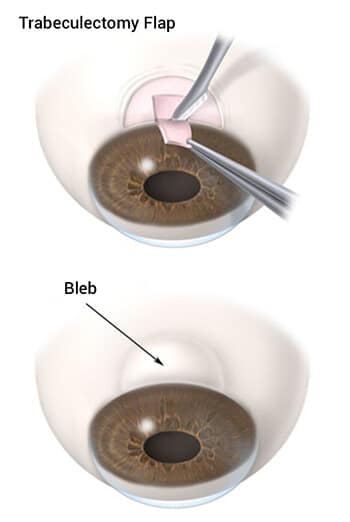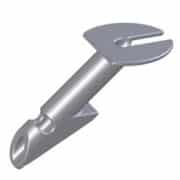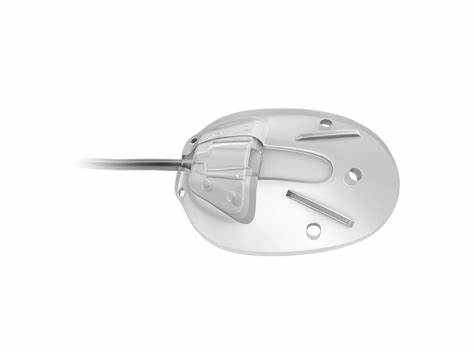Fortunately, there are many different ways to treat glaucoma. There are a variety of eye drops to lower intraocular pressure (IOP) as well as laser surgery. If these methods alone fail, our doctors may suggest a filtration and/or implant procedure. You may also hear these implant procedures referred to as “aqueous shunts” or “drainage devices”.

A trabeculectomy provides an alternate pathway for the existing aqueous humor fluid within the eye to drain, bypassing the drainage channels of the trabecular meshwork thus lowering the IOP. A partial-thickness flap in the sclera is created and a small opening is made called a sclerotomy.
The aqueous fluid flows from the anterior chamber through the sclerotomy and under the flap. The flap is then covered by the outer skin layer of the eye or conjunctiva.
The resultant pooling of the fluid under the conjunctiva pushes up the thin, clear reservoir called a bleb. The fluid is collected in the bleb and is eventually absorbed.
Medications used to control healing are important during the post-operative period to prevent scarring and to help prevent the closure of the drainage site.
Sutures are placed to control the amount of fluid that is filtered into the bleb. During the recovery process, your surgeon may elect to remove those sutures with a laser in order to increase the fluid that is filtered.

There are some situations when your surgeon may recommend using an Ex-PRESS Mini Shunt during your filtration procedure, or trabeculectomy.
This tiny stainless-steel device is placed in the sclerotomy and allows fluid to escape from the eye. Compared to a standard trabeculectomy procedure, the Ex-PRESS Shunt potentially allows for a more controlled fluid flow rate.
It is estimated that several thousand implants are used in the USA each year. Oftentimes, implants are used on what eye surgeons consider the more complicated glaucoma cases when they’ve exhausted the medication and traditional laser treatment options.
Because implants have the ability to provide the most drastic decrease in intraocular pressure, these procedures are often recommended when other treatments have been unsuccessful.

The Ahmed Shunt is a very common type of implant used during the surgery. It’s made up of a tiny silicone tube attached to a curved plate. The fluid will exit through the tube and drain to the plate, which is placed under the conjunctiva and behind the eyelid.
It’s most often located under the top eyelid and is not noticed by the naked eye unless the eyelid is flipped up. This unique device utilizes a valve within the shunt to control the amount of fluid released.
Another type of implant is the Baerveldt shunt. The Baerveldt shunt offers lowered intraocular pressure when aqueous humor flows from inside the eye through the tube and into the reservoir or plate that rests on the white outer layer of the eye.
This is placed out of sight, under the conjunctiva, and under the upper eyelid. A suture is placed during surgery and once this dissolves, or is removed approximately a month later, the tube will be open and begin to regulate the eye’s aqueous humor outflow.
Anytime surgery is performed there are risks involved. Some risks include infection, scarring, pressure becoming too high, the pressure to low or vision loss. The decision of surgery is made after careful consideration of all the associated risks, benefits, and alternatives.
Minnesota Eye Consultants is proud to offer patients convenient access to eye care across the Twin Cities. We have 5 locations, each with an onsite ambulatory surgery center (ASC).